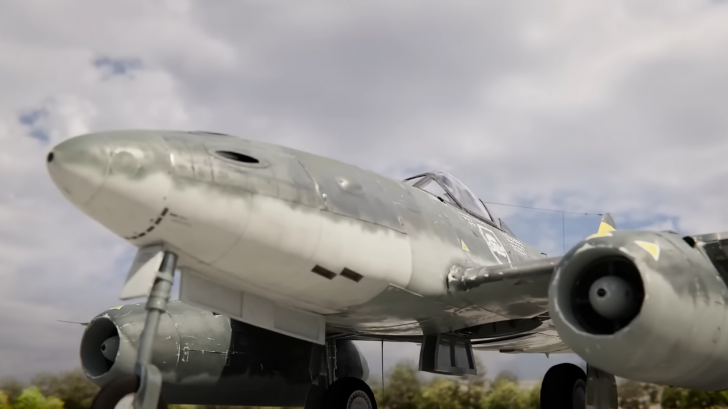Near the end of WWII, Germany came up with a radically new idea for a fighter plane – one powered by turbojet engines. This new type of technology was almost unheard of and could give them the edge against the Allies – or maybe even turn the tides of war in their favor.
Project 1065
The idea first got its wings years before the start of WWII. Germans saw the potential of the world’s first jet-powered plane, the Heinkel He 178, and pushed through the development of Project 1065. The program aimed to procure a jet plane capable of at least 530 mph and could stay in the air for an hour.
However, the program was pushed back due to a lack of funding. High-ranking German officials thought that conventional aircraft would be enough to win the war.
As a result, the Me 262 performed its maiden flight in 1942 with several engine problems. By 1943, German Ace Adolf Galland was able to fly the Me 262 during its “infancy” and was quoted saying,
“This is not just a step forward. This is a leap forward.”
Me 262 Design
The most fascinating part of the Me 262 was its design. Its wings were swept back 18.5 degrees to move the center of gravity and accommodate its huge jet engines in pods under the wings. This configuration also allowed for lower drag and a better maximum speed.
Two Junkers Jumo 004 engines powered the Schwalbe, each capable of outputting 1,980 lbf of thrust.
Furthermore, the 262 was armed with four 30mm MK-108 cannons to complement its fighter/interceptor designation.
Redesigned By Hitler
Things got a bit more convoluted when Messerschmitt decided to show off the Me 262 prototype to Hitler. With the incoming Allied invasion of France, Hitler thought that the Schwalbe would be better used for fast, deep strikes into Allied territory. Even though turning a fighter into a bomber was unprecedented at the time, Messerschmitt still decided to heed his command and ordered fighter production to be drastically reduced while the bomber variant was designed.
When D-Day came around, Germans were unable to stop the Allies on the ground – nor were they successful in fielding the new Me 262 variant that Hitler ordered. In his rage, he issued a direct order to completely stop any fighter production in favor of the attack/bomber variant.
Many Issues
The main issue with its engines lies in the materials it was built out of. Because of the blockade and Germany’s inability to acquire rare and expensive materials, the Jumo 004s were made out of steel which wasn’t able to handle the heat or the wear and tear in an axle compression engine.
The engines were then plagued with reliability problems, resulting in them getting serviced more frequently than other aircraft. As this was going on, factories trying to produce the 262s were also heavily targeted by the Allies. Pretty soon, tunnels, underground facilities, and even forests became the assembly place of the Me 262.
A Fast Solution
The Me 262’s short reign ended when Allied fighter pilots finally figured out how to counter the German jet plane. Me 262s were fast, but they will struggle to gain speed during takeoffs. Many would be destroyed on the ground as Allied bombing raids were focused on airfields where the jets were last spotted.
P-51 pilots also found that if they could get the Me 262 into a dive or a downward spiral during a dogfight, they would be able to catch up with it. As such, the Me 262 amounted to nothing. Although, its design did end up influencing earlier jet planes in the mid-1900s.



